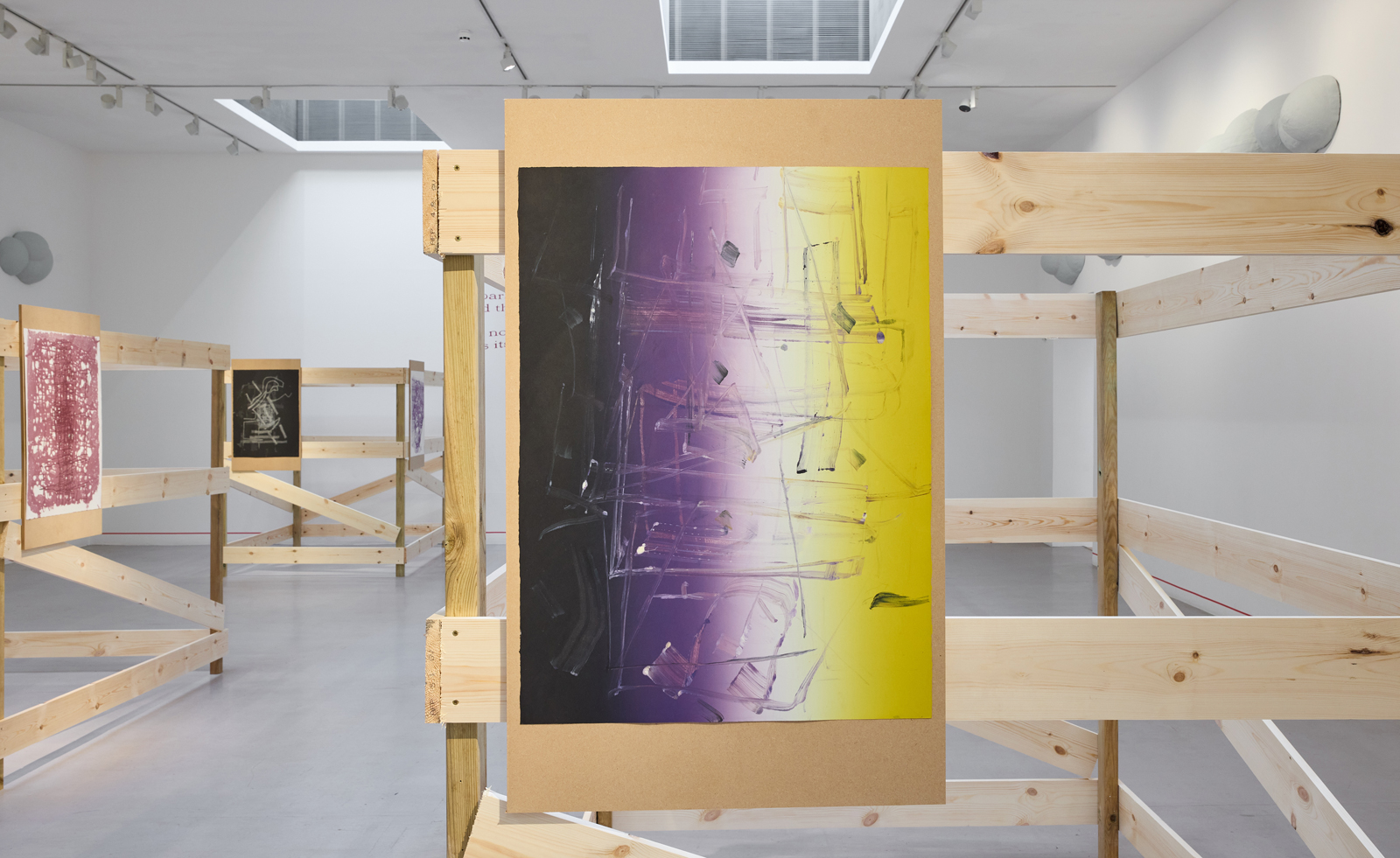
‘I’m performing for you now, that was a little bit of schtick for you,’ Gregg Bordowitz tells me. We’re standing in the entryway of Camden Art Centre surrounded by Debris Fields, a series of poems where each line is ten syllables long, and made up entirely of nouns. Camden Art Centre will be playing host to his new show, ‘There: A Feeling’. He’s telling me about his relationship with therapy; the time he’s spent in it and the forms that it’s taken. I laugh when he says ‘being in therapy gives me no credentials, but I’m interested, and also kind of a lifer’. He insists that rather than being an actor, he’s a performer, saying ‘if I have any craft as a performer, and I don’t really, I’m able to amplify certain aspects of my personality.’ This act of amplification, putting aspects of the self under a microscope, is central to Before and After (Still in Progress), the latest in a trilogy of autobiographical video works by the artist. In Before and After, Bordowitz reads or speaks in different contexts; from the sardonic humour of stand-up comedy to a reading from scripture during Yom Kippur. Bordowitz describes this to me as the idea of ‘multiple selves existing within a singular self’.
Throughout ‘There: A Feeling’, Bordowitz’s multitudes are manifested in the different forms that the artwork takes; there are videos, poems, monotype prints, and more. There’s a specificity to how the work is displayed; according to the artist, ‘a lot of these works have been shown before, but whenever they’re shown, they’re responding to the context or space in which they’re being shown’. The monotype prints are on the side of built pieces made to look like tree protectors near the artist’s Brooklyn home, and Continuous Red Line – on display both in Camden (until 23 March) and at the Bonner Kunstverein in Germany (until 2 February) – takes on a different form as it responds to the layout of the two individual galleries. ‘The procedure or rule for Continuous Red Line is a half-inch red stripe placed level at the base of the walls, three inches from the floor, continuously over walls, over any interstitial architectural elements throughout the space, and it calls to mind…’ Before Bordowitz can finish this thought, he turns it into a question, asking me, ‘What does it call to mind for you?’
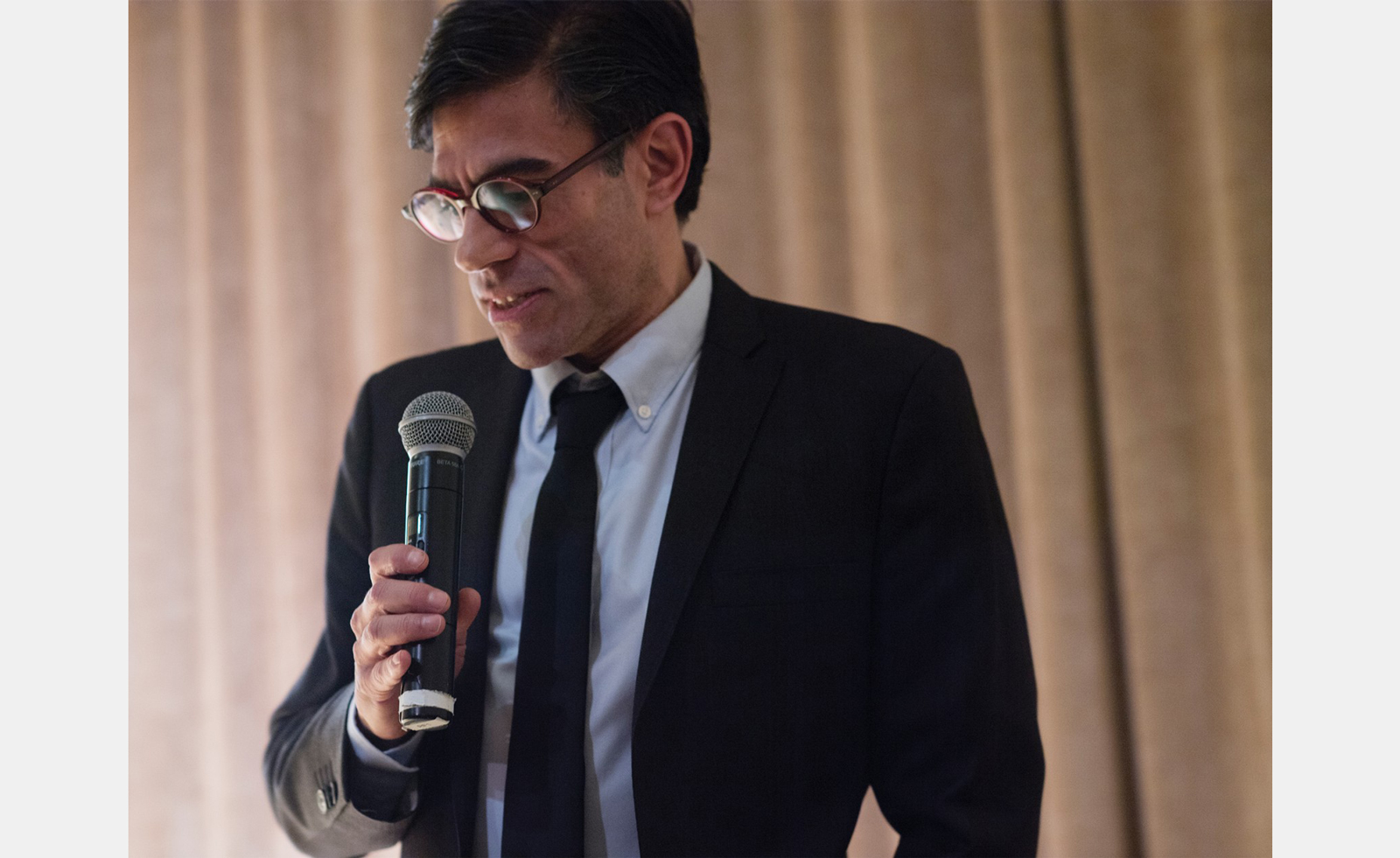
Gregg Bordowitz, Some Styles of Masculinity, performance view,New Museum, New York, 2018
Bordowitz, I discover, is more interested in questions than he is answers, more compelled to draw out my own interpretations of his work than he is to offer up his own thoughts. There’s an openness and malleability to work; Continuous Red Line could just as easily represent the thread of fate in ancient myth, or the colour-coded lines guiding people through the wings of a hospital, just as Baroque Clouds – made of plaster, cloth, and paint – could seem like clouds at first glance, and fragmented forms of the body another time. He tells me that rather than being a retrospective or a survey, this show (and its German sibling) is ‘a proposition’. Nothing about what the show might mean is set in stone, even after everything is finalised. This constant overlapping of meaning is central to Bordowitz’s practice. ‘My history as an activist and my political commitments are bound up with my questions of form and composition, which are also questions of organisation.’ Here, organisation takes on multiple meanings; from questions of curation and how things are organsied in space to political organisation and the role that activism plays in Bordowitz’s work, and in this show, which grapples so much with ideas of history, reference, and lineages (political, artistic, and otherwise).
‘There: A Feeling’ places all of the poems of Debris Fields in the space’s entryway; laid out along the walls, with a typeface that’s reminiscent of headstones, the piece becomes an act of memorialising, a way of asking what and how we remember. Bordowitz is effusive in his discussion of influence, reference, and the lineages in which he places his many selves. The show itself takes its name from the Paul Celan poem Homecoming, and one of the gallery walls contains an extract from The Walls Do Not Fall by the modernist poet HD (Hilda Doolittle), which Bordowitz considers as a way of looking at ‘the angle of history’.
‘I’m really interested in intellectual histories, who knew who when, but I also make them up as a matter of fiction’
Gregg Bordowitz
A collection of Bordowitz’s writing, titled The AIDS Crisis is Ridiculous, takes its name from the Ridiculous Theatrical Company run by Charles Ludlam, a writer, director, and performer who passed away during the AIDS crisis. Bordowitz tells me that he’s always ‘constructing and reconstructing genealogies’ in his head: ‘I’m really interested in intellectual histories, who knew who when, but I also make them up as a matter of fiction. I wrote about Ludlam, and I didn’t know Ludlam, in fact, I never saw Ludlam perform. I got interested in Ludlam after he died of AIDS.’ For Bordowitz, this language of reference – inspired by the landscape of postmodernism, and the art of the Pictures Generation artists, brought together in a show curated by the theorist and critic Douglas Crimp – also ‘has a lot to do with being a survivor’, with these gestures towards Celan, Ludlam, and so many more serving as a way for Bordowitz to sustain a history that could someday disappear.
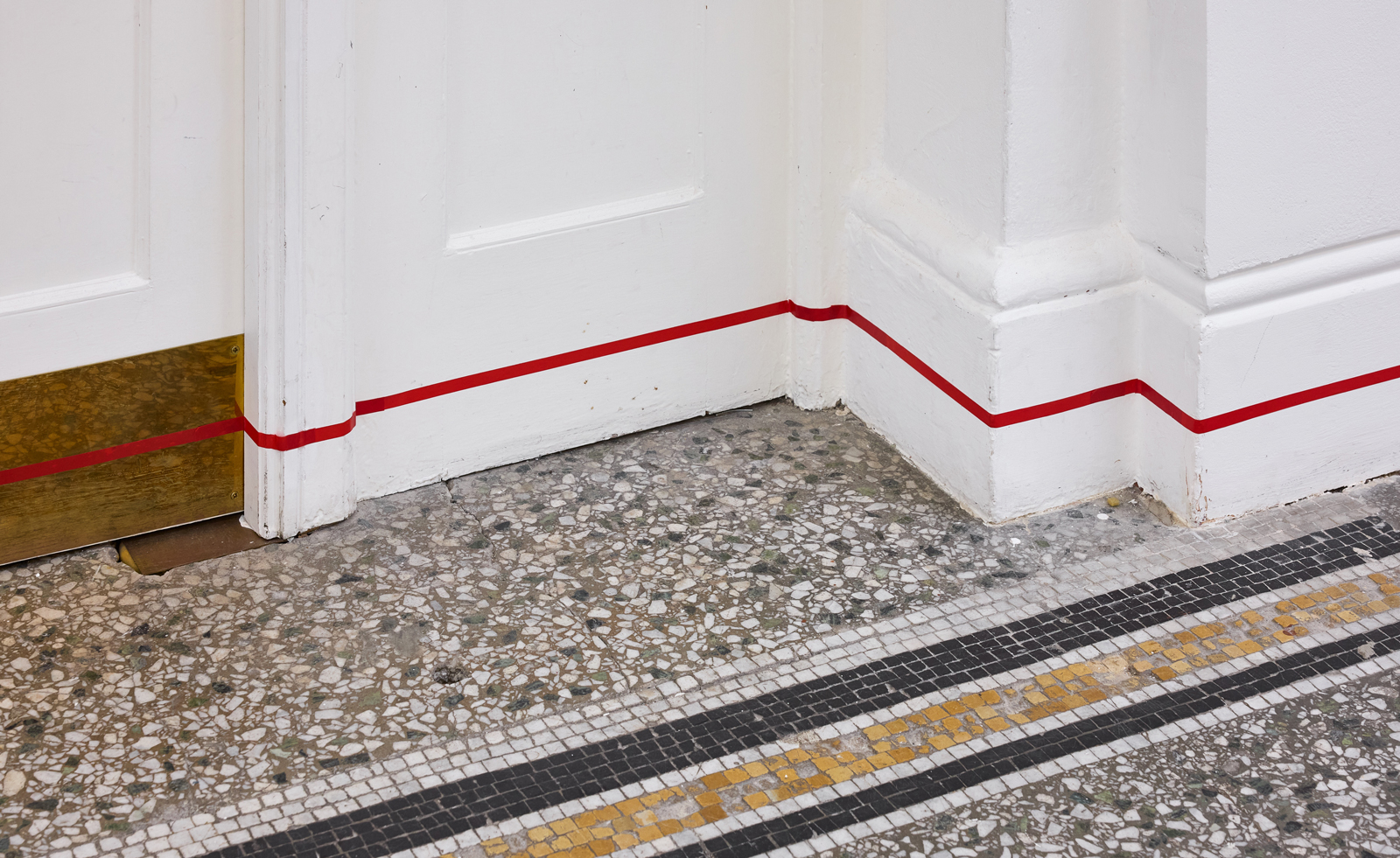
Installation view of Gregg Bordowitz, ‘There: a Feeling’ at Camden Art Centre, 2025
This is at its most explicit in some of Bordowitz’s video work. The 1993 film, Portraits of People Living with HIV was made while Bordowitz was working with Gay Men’s Health Crisis. ‘The portraits are really about the mundane,’ Bordowitz says, ‘at a time from 1991-1993, when AIDS was seen as being a quote-unquote death sentence. I was interested in showing friends, lovers, fellow activists, in their daily lives. So they’re portraits of… us. Listening to music, going on walks, going shopping, on vacation. I was very interested in not doing dramatic portraits.’
Bordowitz tells me that he’s ‘interested in developing and refining questions’, more so than he is in discovering any kind of concrete answer. It’s this that seems to best connect the many forms of his art to the poetic voices that adorn the walls of Camden Arts Centre. Any answers provided by ‘There, A Feeling’, are complicated, lingering somewhere between layers of performance, organisation, and history. Taken together, as a chorus of voices, a multitude of selves, Bordowitz invites me to find my own place in this complex, ever-expanding genealogy, asking not just what I feel, but what’s led me to feel it.
Receive our daily digest of inspiration, escapism and design stories from around the world direct to your inbox.
Gregg Bordowitz's 'There: A Feeling', is at Camden Art Centre until 23 March 2025
Discover more of the best new London art exhibitions to see this month
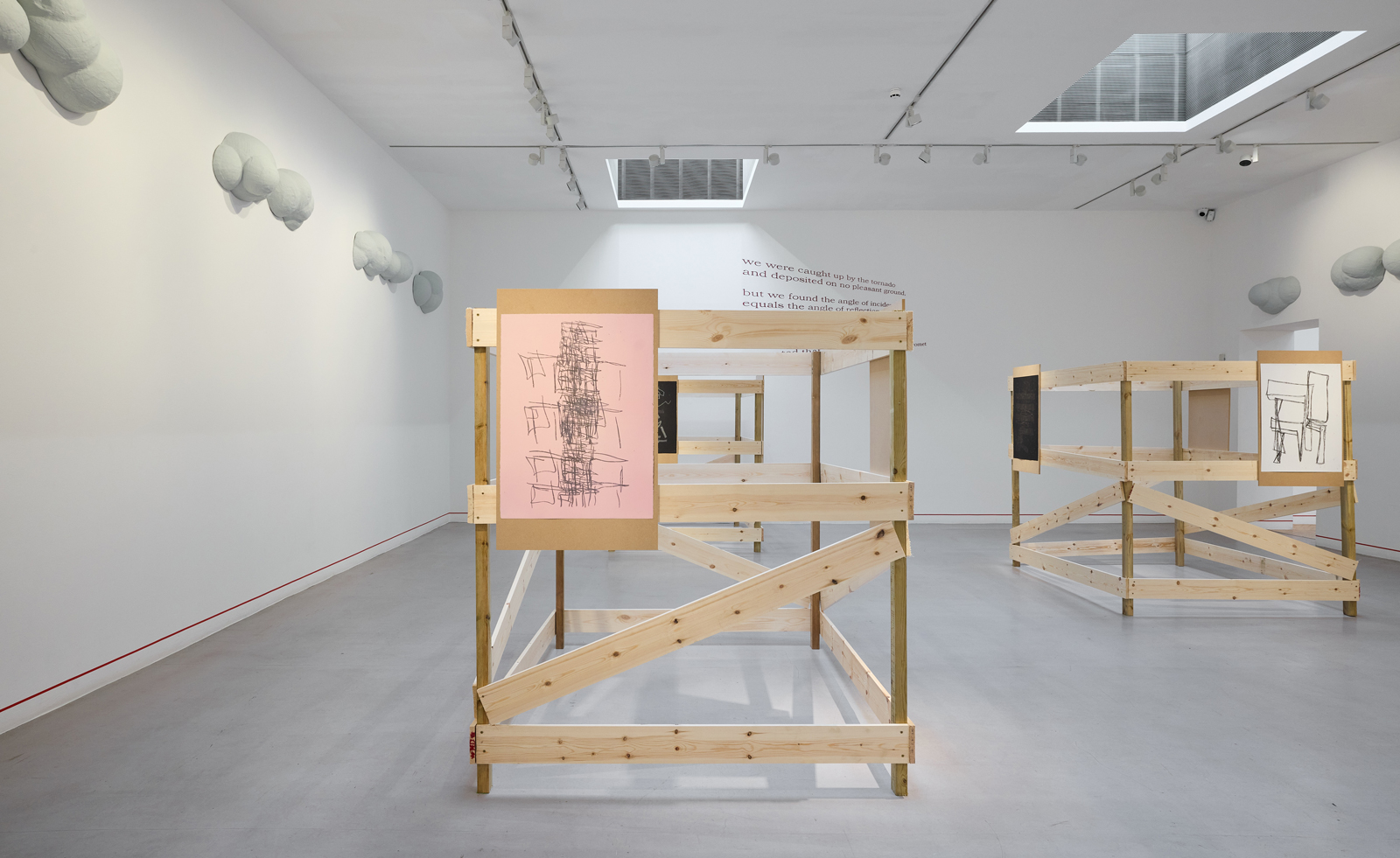
Installation view of Gregg Bordowitz, ‘There: a Feeling’ at Camden Art Centre, 2025
Sam is a writer, artist, and editor. Their publications include All my teachers died of AIDS (Pilot Press, 2020), and Search history (Queer Street Press, 2023). They are one of the co-curators of TISSUE, a trans literary events and publishing initiative based in London
-
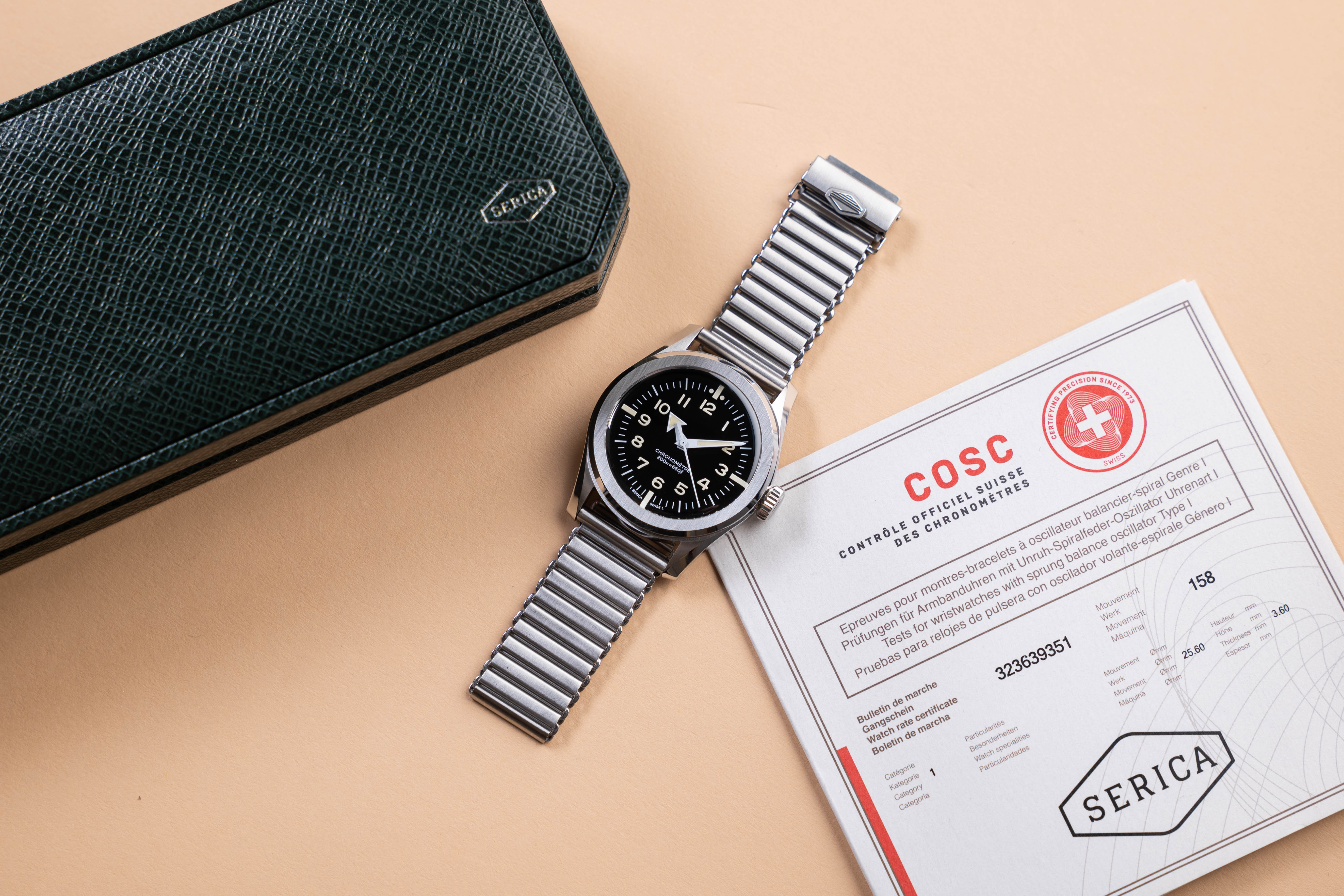 Click to buy: how will we buy watches in 2026?
Click to buy: how will we buy watches in 2026?Time was when a watch was bought only in a shop - the trying on was all part of the 'white glove' sales experience. But can the watch industry really put off the digital world any longer?
-
 Don't miss these art exhibitions to see in January
Don't miss these art exhibitions to see in JanuaryStart the year with an inspiring dose of culture - here are the best things to see in January
-
 Unmissable fashion exhibitions to add to your calendar in 2026
Unmissable fashion exhibitions to add to your calendar in 2026From a trip back to the 1990s at Tate Britain to retrospectives on Schiaparelli, Madame Grès and Vivienne Westwood, 2026 looks set to continue the renaissance of the fashion exhibition
-
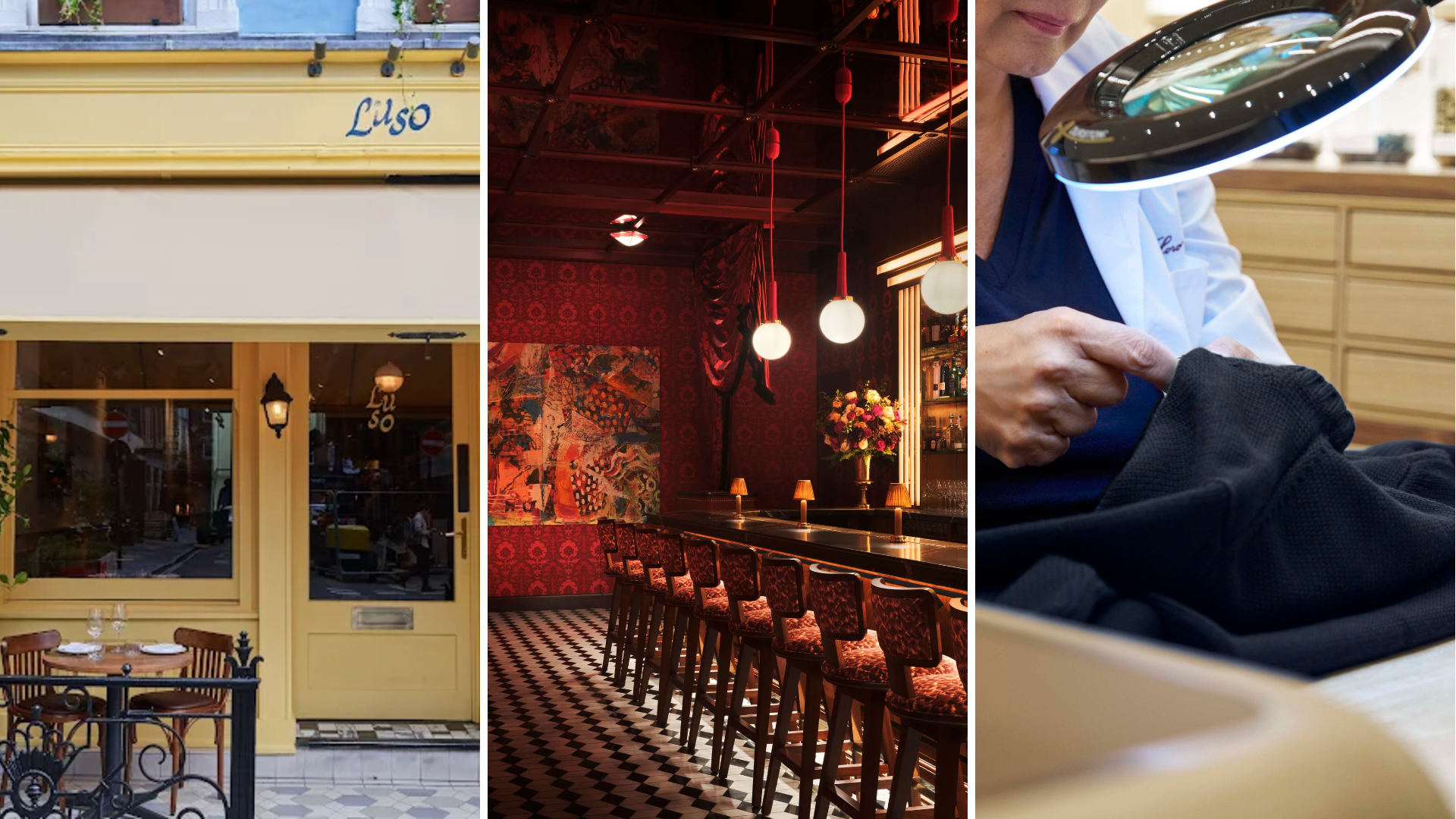 Out of office: The Wallpaper* editors’ picks of the week
Out of office: The Wallpaper* editors’ picks of the week'Tis the season for eating and drinking, and the Wallpaper* team embraced it wholeheartedly this week. Elsewhere: the best spot in Milan for clothing repairs and outdoor swimming in December
-
 Out of office: The Wallpaper* editors’ picks of the week
Out of office: The Wallpaper* editors’ picks of the weekFar from slowing down for the festive season, the Wallpaper* team is in full swing, hopping from events to openings this week. Sometimes work can feel like play – and we also had time for some festive cocktails and cinematic releases
-
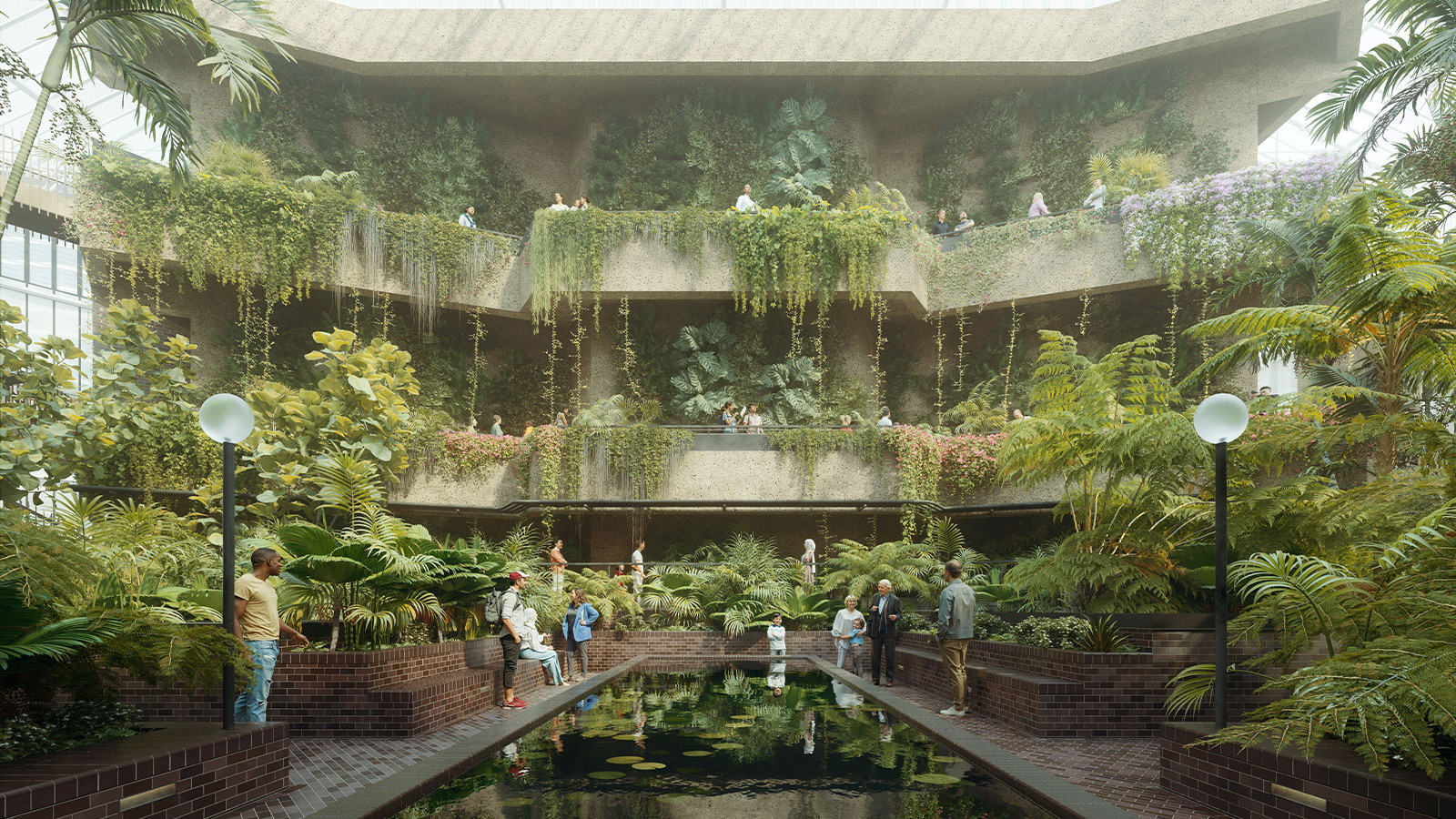 The Barbican is undergoing a huge revamp. Here’s what we know
The Barbican is undergoing a huge revamp. Here’s what we knowThe Barbican Centre is set to close in June 2028 for a year as part of a huge restoration plan to future-proof the brutalist Grade II-listed site
-
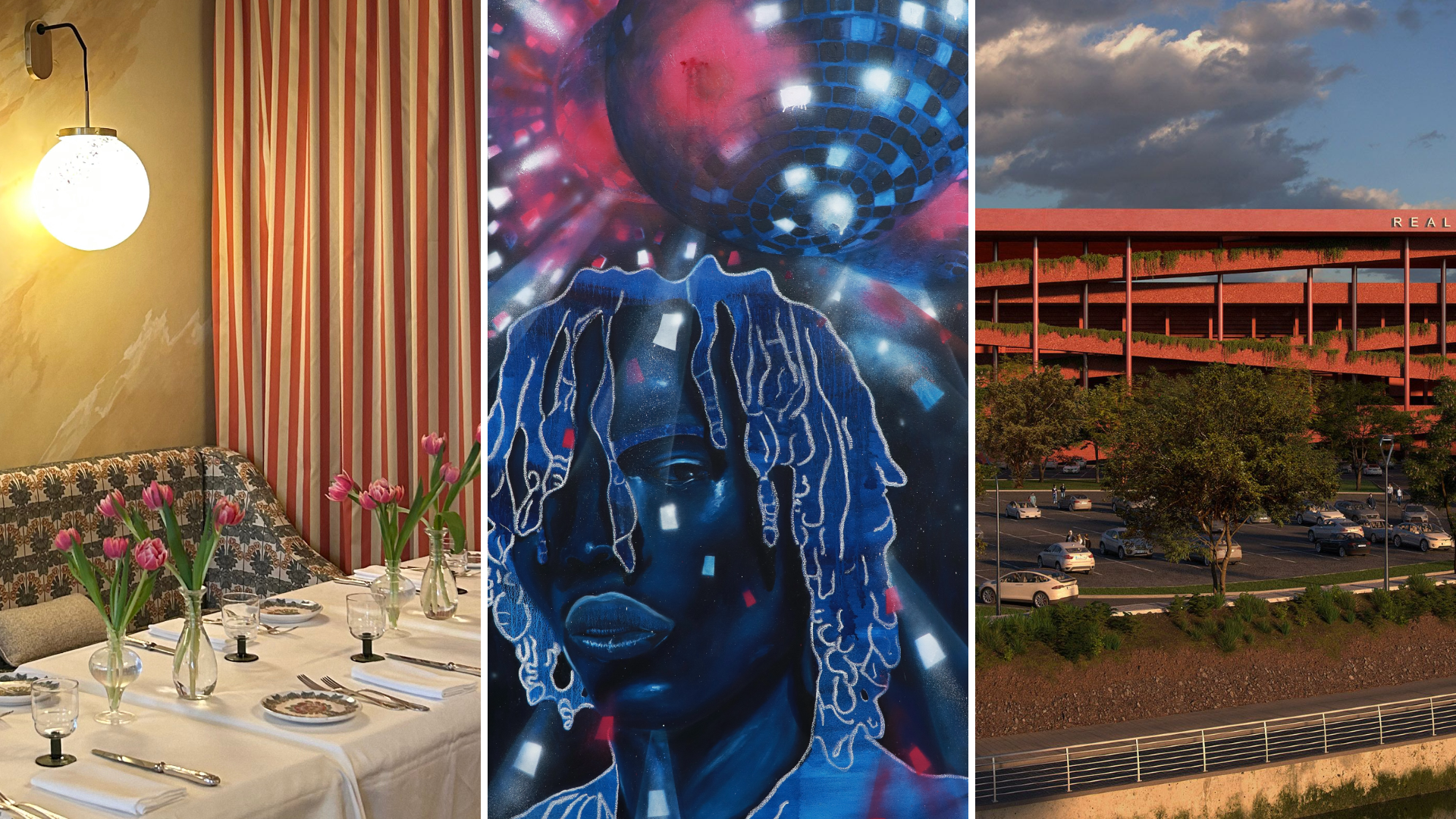 Out of office: The Wallpaper* editors’ picks of the week
Out of office: The Wallpaper* editors’ picks of the weekIt’s wet, windy and wintry and, this week, the Wallpaper* team craved moments of escape. We found it in memories of the Mediterranean, flavours of Mexico, and immersions in the worlds of music and art
-
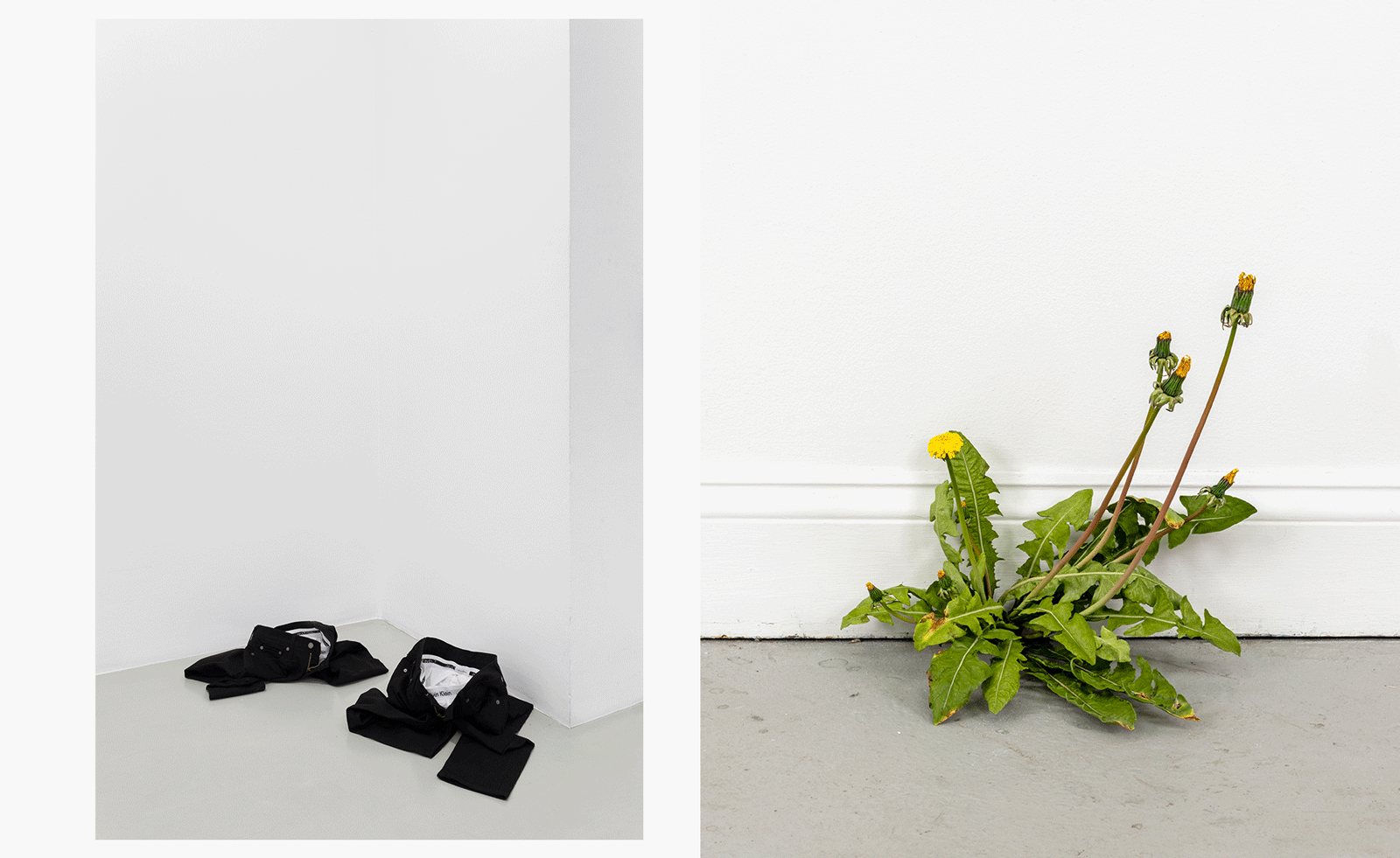 Each mundane object tells a story at Pace’s tribute to the everyday
Each mundane object tells a story at Pace’s tribute to the everydayIn a group exhibition, ‘Monument to the Unimportant’, artists give the seemingly insignificant – from discarded clothes to weeds in cracks – a longer look
-
 Out of office: The Wallpaper* editors’ picks of the week
Out of office: The Wallpaper* editors’ picks of the weekThis week, the Wallpaper* team had its finger on the pulse of architecture, interiors and fashion – while also scooping the latest on the Radiohead reunion and London’s buzziest pizza
-
 Out of office: The Wallpaper* editors’ picks of the week
Out of office: The Wallpaper* editors’ picks of the weekIt’s been a week of escapism: daydreams of Ghana sparked by lively local projects, glimpses of Tokyo on nostalgic film rolls, and a charming foray into the heart of Christmas as the festive season kicks off in earnest
-
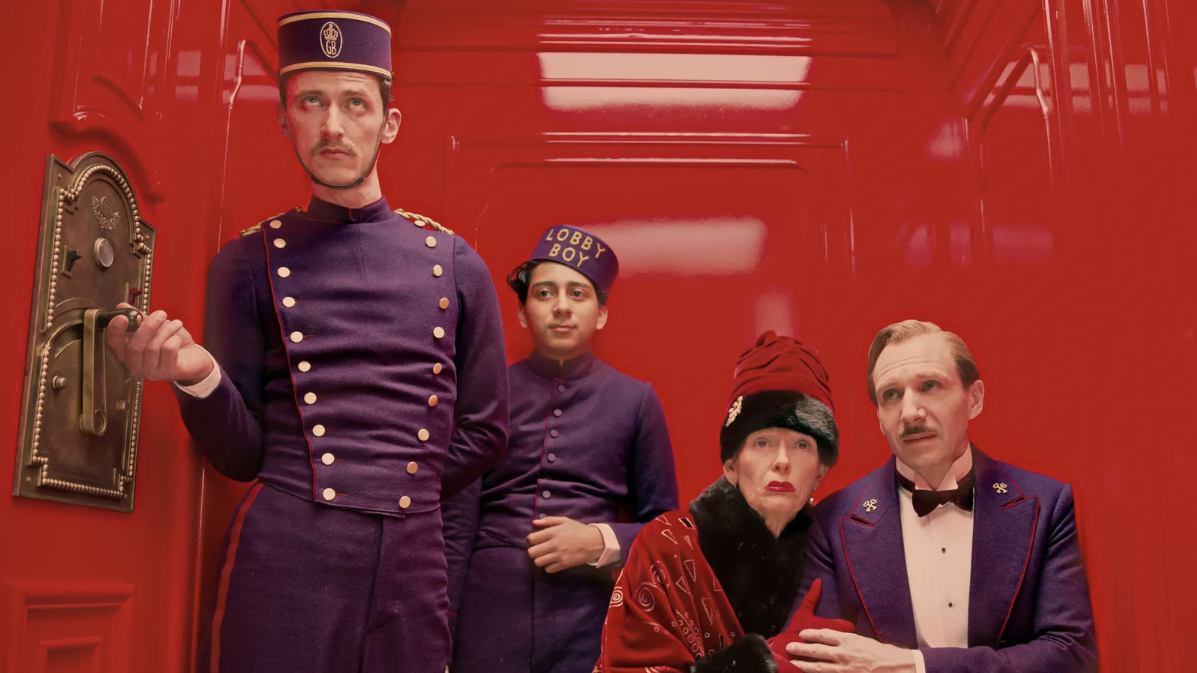 Wes Anderson at the Design Museum celebrates an obsessive attention to detail
Wes Anderson at the Design Museum celebrates an obsessive attention to detail‘Wes Anderson: The Archives’ pays tribute to the American film director’s career – expect props and puppets aplenty in this comprehensive London retrospective